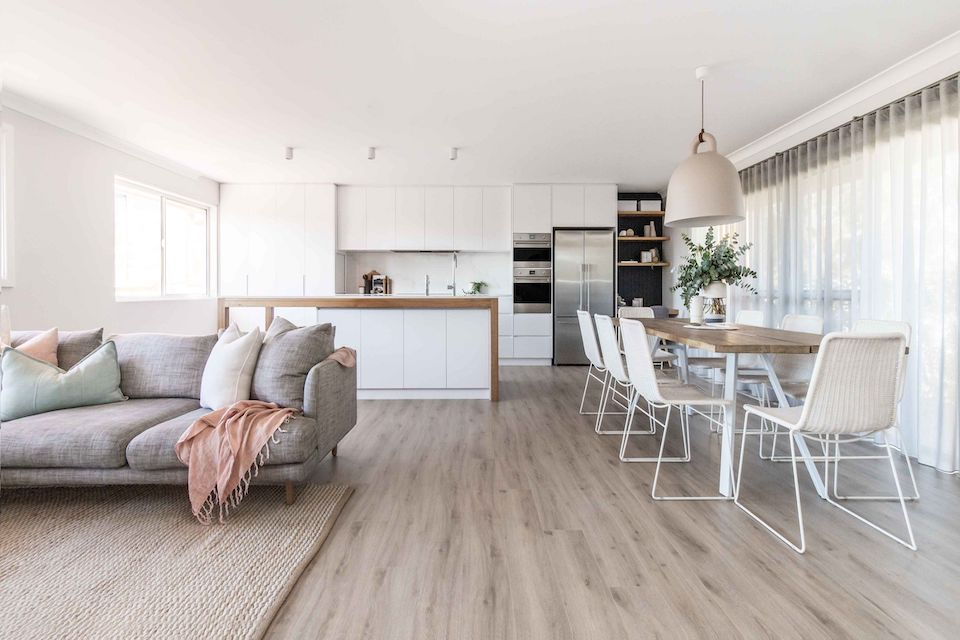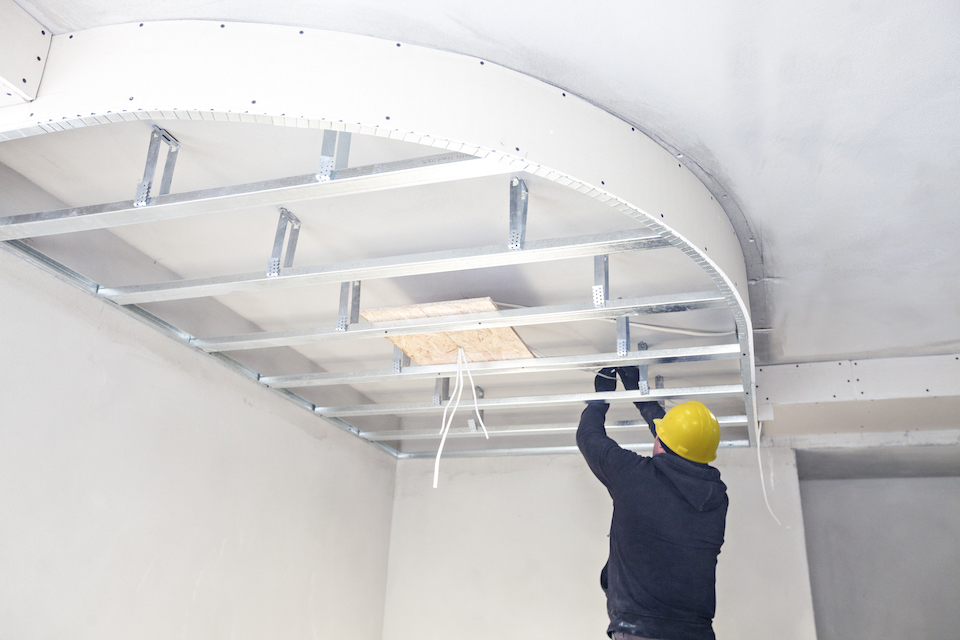How Much Does Repointing Brickwork Cost?
Let's start with chimney repointing?
To have a chimney pointed or repointed would cost approximately £30 to £50 per square metre. The average cost of pointing/repointing a chimney is £500 to £1,000.
Repointing essentially involves removal and replacement of mortar - which is an essential component that ensures the structural integrity of your home and other structures.
What about repointing a house?
It would cost about £1,400 to £2,100 to have the front or side of a house pointed/repointed, £2,400 to £3,100 to point/repoint a semi-detached house, and you’d need to budget for £3,200 to £4,100 to point/repoint a terraced property.
How much would it would be for scaffolding?
The costs will be several hundred to several thousand pounds more if scaffolding is needed, which costs roughly £50 to £150 a day.
If you're ready to get a quote for your repointing job, we can help connect you with local repointing specialists.
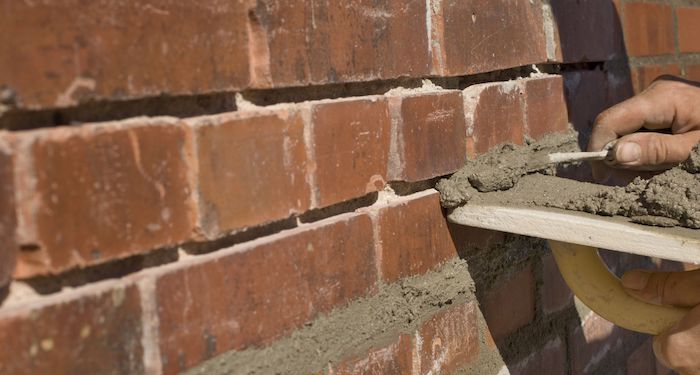
What factors can change the overall cost of repointing?
The cost of repointing will differ based on a whole host of cost-factors including the number of tradespeople working on the job, the state/type of repointing area, size/type of property, ease of access, weather conditions (potentially), and property location.
Where you live is relevant since labour costs vary across the UK.
To find a local price for repointing, try Googling ‘Repointing specialist near me’.
Additionally, you can use a repointing cost calculator to estimate costs based on specific measurements.
House Repointing Prices in 2025
| Job Description | Total |
|---|---|
| Point/Repoint a Wall | £30 to £50 per m2 |
| Point/Repoint a Chimney | £500 to £1,000 |
| Point/Repoint the Side of a House | £1,400 to £2,100 |
| Point/Repoint a Semi-detached House | £2,400 to £3,100 |
| Point/Repoint a Terraced House | £3,200 to £4,100 |
The table above provides the average repointing cost for different jobs. For example, the average repointing cost for a brick wall is £55 per m2, but this can vary based on the project's specifics. Expert estimators can provide more precise information.
- How Much Does Repointing Brickwork Cost?
- What is Repointing?
- Benefits of Repointing Brick Walls
- What are the Supply Costs of Brickwork Repointing?
- What are the Additional Costs of Repointing Brickwork?
- Tradesmen Costs for Brickwork Repointing
- How Long Does Brickwork Repointing Take?
- Types of Pointing Mortar
- Pointing Methods
- DIY Repointing vs. Hiring a Contractor
- Repointing Process
- FAQs
- Sources
What is Repointing?
Repointing is the process of replacing old, worn-out mortar in brick, stone, and block structures with new mortar. This essential maintenance task helps preserve the structural integrity of buildings and prevents potential damage from water and damp.
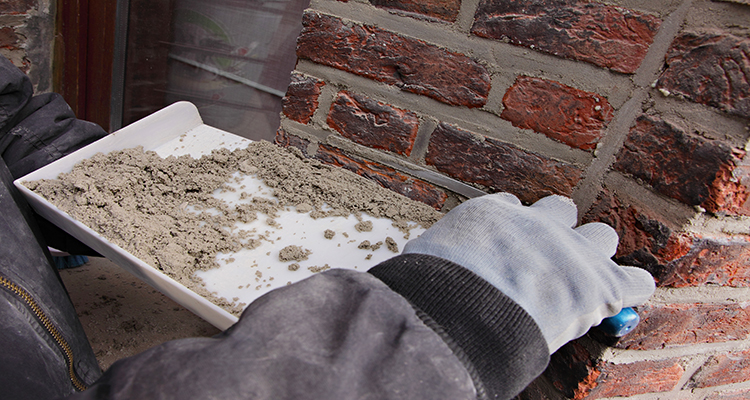
Over time, mortar can erode, leading to gaps between bricks, stones, and blocks. These gaps can cause structural issues and allow water to seep in, leading to further damage.
By repointing brickwork, you restore the original strength and appearance of the building, ensuring it remains sturdy and visually appealing.
Benefits of Repointing Brick Walls
Repointing brick walls offers numerous benefits that go beyond mere aesthetics. Here are some key advantages:
- Prevents Water Damage and Dampness: By filling in gaps and cracks, repointing helps keep water out, preventing dampness and water damage.
- Maintains Structural Integrity: Repointing reinforces the brickwork, ensuring the building remains strong and stable.
- Enhances Appearance: Fresh mortar can significantly improve the look of your brick walls, giving them a clean and well-maintained appearance.
- Increases Lifespan: Properly maintained brickwork can last for decades, and repointing is a crucial part of this maintenance.
- Prevents Potential Wall Collapse: By addressing weakened mortar joints, repointing reduces the risk of wall collapse.
- Reduces Maintenance Costs: Regular repointing can prevent more extensive and costly repairs in the future.
What are the Supply Costs of Brickwork Repointing?
Let’s now take a closer look at the supply costs in particular. This excluded the labour cost and any waste removal expenses as well as additional costs such as scaffolding.

The average price of supplies for pointing or repointing brickwork is £200 to £500 depending on the scale and extent of the work. High-quality mortar can impact the overall cost, as mortar quality varies and can affect the durability and appearance of the brickwork.
If you decide to point or repoint brickwork DIY then you’d like pay about £100 to £600 for a cement mixer, £5 to £20 to buy a chisel, £10 to £50 to purchase a mortar board, £4 to £30 for a wire brush, £1 to £6 for a soft brush, £1 per kg of mortar mix, or £5 to £20 to buy a pointing trowel.
Cost of Supplies for Brickwork
| Supply | Cost |
|---|---|
| Wire Brush | £4 to £30 |
| Soft Brush | £1 to £6 |
| Pointing Trowel | £5 to £20 |
| Chisel | £5 to £20 |
| Mortar Mix | £1 per kg |
| Mortar Board | £10 to £50 |
| Cement Mixer | £100 to £600 |
What are the Additional Costs of Repointing Brickwork?
There are a variety of factors that can influence the overall repointing costs when having brickwork pointed or repointed. Let’s explore some examples.
Minimum Fee
For starters, a minimum charge may appear on your final bill. It could be a charge set aside from other expenses or in the form of a minimum fee per day.
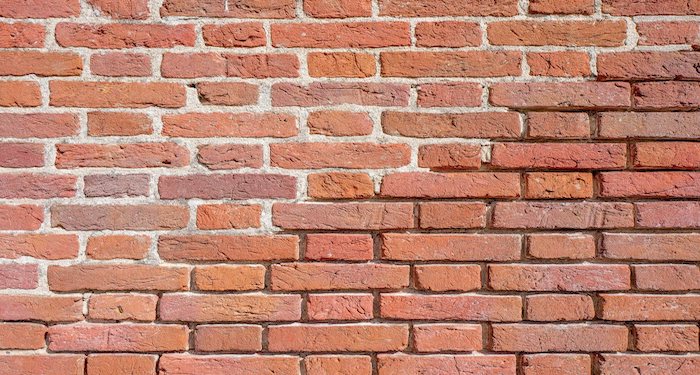
This meaning that if you are charged per day of labour, whether the job takes five days and two hours or five days and six hours, you’d pay for six days of labour one way or another.
Size/Type of Property
Of course, the bigger the property, the more work that may be required. The size and type of the brick wall can significantly impact the amount of work needed, especially if you are planning to have an entire property or a large section (e.g. front or side) of a property pointed or repointed.
It may also prove relevant for other jobs such as pointing/repointing a chimney as the dimensions of the chimney can often be linked with the size/type of property.
Type of Pointing/Repointing
The type of pointing/repointing used is also important when it comes to the overall brickwork repointing cost. This work can be undertaken with a range of different materials including cement, mortar, and concrete.
Number of Tradespeople
The more labourers working on a project, the higher the overall labour cost will be. At the same time, the more contractors you’ve hired, the quicker the job will take.
For that reason, increasing or decreasing the number of labourers on a project may or may not add to or reduce your overall bill. It will largely depend on how well the tradespeople work as a team.
Duration
The longer it takes to point/repoint brickwork, the more the labour cost will likely be. Of course if a set labour fee applies then duration is irrelevant.
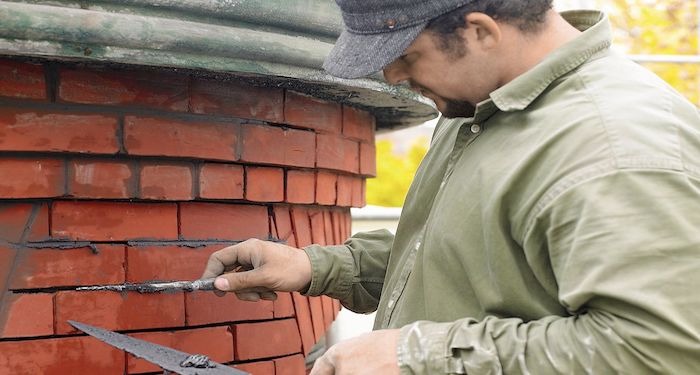
If labour is charged per day, then it is only relevant when crossing from one working day into the next. It is when you pay per hour for labour that duration is particularly relevant.
Tradesmen Costs for Brickwork Repointing
Now, let’s take a closer look at the labour costs involved in pointing/repointing brickwork. In this section, we’ll analyse how much the labour costs would come to for different jobs and discuss what cost factors might apply.
On average, the labour cost would land about £150 to £325 per day per labourer. Given that two tradespeople will usually work in unison, you can expect an average total daily labour cost of £300 to £650.
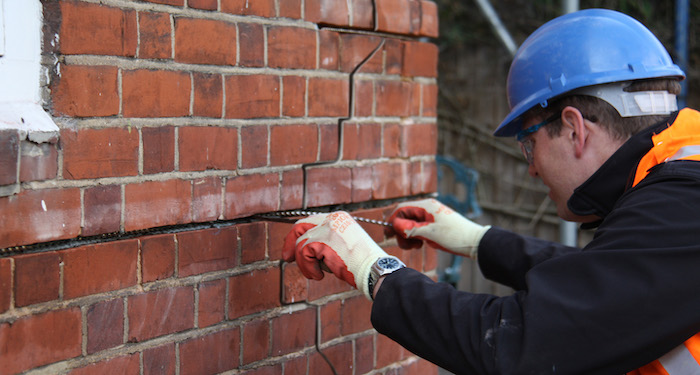
Of course, this cost could vary substantially depending on a wide range of factors including ease of access, the state of the work area, weather conditions, the type/size of property, the number of tradespeople hired, and the location of your property.
How Long Does Brickwork Repointing Take?
We’ll now discuss how long this type of work may take and what factors may shape and determine the time frames involved in pointing/repointing brickwork.
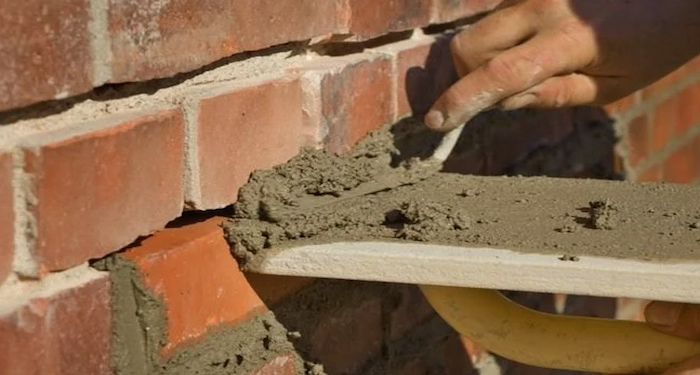
On average, it takes one to two days to point/repoint a wall, one to five days to perform this work on a chimney, five to seven days if the work is taking place on the side of a house, 12-16 days to point/repoint a semi-detached house, or 15-20 days to point/repoint a terraced house.
Among the most prevalent factors in determining the time it takes to point/repoint brickwork are ease of access, the size/type of property, the state of the work area, weather conditions, and the number of tradespeople hired for the job.
Types of Pointing Mortar
There are several main types of pointing mortar. In this section, we’ll look at the features of each option, their pros & cons, and average cost.
Type N Mortar
The most common choice is Type N mortar. It consists of a 6:1:1 ratio of sand, Portland cement, and lime. It comes with a pounds per square inch or psi strength of 750, making it well suited to work above the surface.
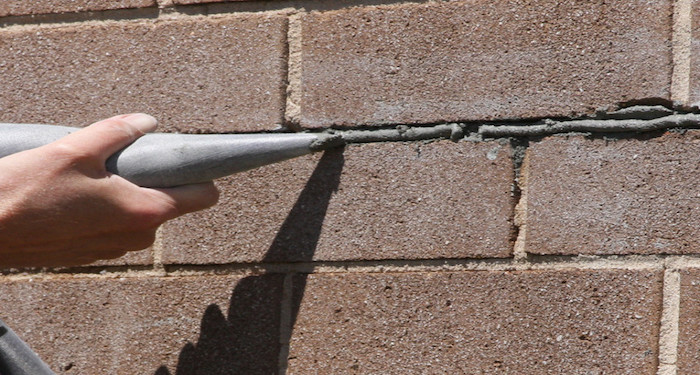
It can sustain heavy weights and is perfect for protecting structures from the elements, particularly if exposed to very harsh weather. It’s also known for being easy to utilise.
Pros:
- Can hold heavy weights
- Protects structures from the weather
- Strong
- Easy to use
Cons:
- Not ideal for all jobs
Type O Mortar
The next option worth considering is Type O. This mix is not as durable as Type N with a strength of 350 psi.
It is more suited to indoor work. Given the material’s consistency, it’s fairly straightforward to apply. It comprises a 9:2:1 ratio of sand, lime, and Portland cement.
Pros:
- Well suited to indoor work
- Good option for masonry wall repair
- Quite easy to use
Cons:
- Not especially strong
Type S Mortar
The next option is very strong with an 1800 psi. In fact, it’s possible to achieve 3000 psi with Type S. Given that it can endure heavy soil pressure, it’s a great option for underground work.
It can also withstand harsh weather conditions. You’ll often find Type S mortar in patios, retaining walls, sewers, and manholes.
Pros:
- Second strongest choice
- Ideal for underground work
- Can endure adverse weather
Cons:
- Not as common as Type N mortar
Type M Mortar
The strongest mortar available is Type M with an average 2500 psi. With a 12:3:1 ratio of sand, Portland cement, and lime, the fact this option contains more Portland cement makes it unsuitable for especially old properties.
It is not an especially adhesive mortar, however, so it’s not often used for exposed structures.
Pros:
- Very strong mortar mix for repointing brickwork
- Great for retaining walls
- Suitable for foundations
Cons:
- Not particular adhesive
- Unsuitable for exposed surfaces
- Not suited to old properties
Lime Mortar
Last but certainly not least is the option of lime, whether with hydraulic or non-hydraulic lime. It also features an aggregate and water.
It’s mainly employed to preserve old structures since Portland cement is unsuitable for old structures from prior to the 19th century, particularly for those buildings made with stone.
Repointing stone walls can be more complex and costly compared to brick walls, with costs varying based on the stone layout and complexity of the work. Lime mortar costs about £15 for 25kg.
Pros:
- Repointing brickwork with lime mortar can preserve old structures
Cons:
- Not a good choice for most pointing/repointing work
Pointing Methods
There are several common pointing approaches that can be used. Let’s take a closer look at these options.
Flush Pointing
With this method, the mortar is pressed down heavily into brick joints. It is made flush with the edge of the brick before these edges are trimmed using a trowel. Though not the most visually appealing technique, flush pointing helps with prolonging the structure.
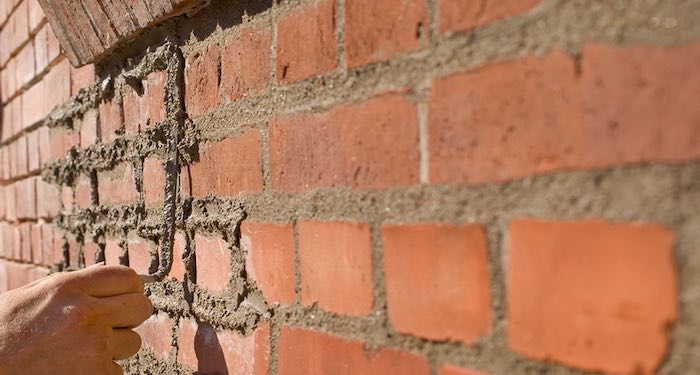
This approach helps to keep moisture, dust and dirt out and as a result offers better longevity. It is often used for work that involves stone masonry or bricks.
Pros:
- Durable and long-lasting option
- Relatively easy to undertake
- Keeps moisture, dirt, and dust out
Cons:
- Not a particularly aesthetic choice
Recessed Pointing
The next option on the list is recessed pointing. This approach involves pressing the mortar back to a point of about 5mm + from the edges vertically.
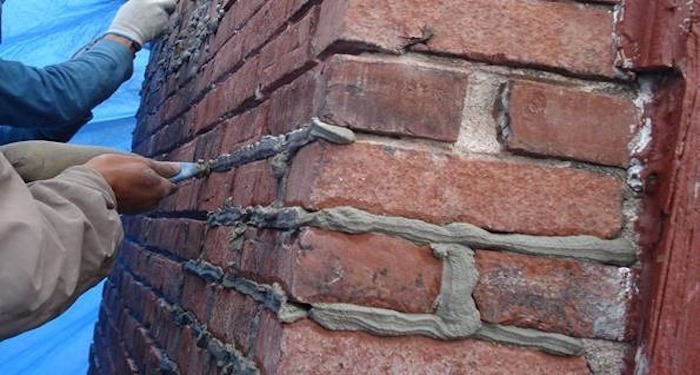
Though not as sturdy and long-lasting as flush pointing, it leaves a better look. It’s often employed for high-class masonry work.
Pros:
- Visually appealing
- Well suited to high-class masonry work
Cons:
- Not as durable as flush pointing
Beaded Pointing
This is another option that offers a good appearance. Despite its visual advantages, beaded pointing is more prone to damage and may not be the right choice for your property. It’s also a fairly unstable approach.
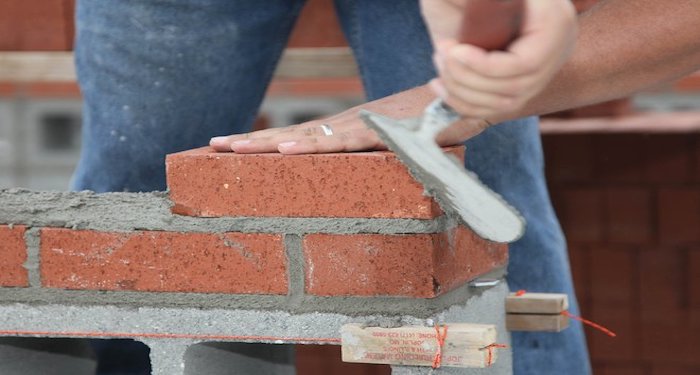
Pros:
- Aesthetically pleasing
Cons:
- Susceptible to damage
- Fairly unstable
V-groove Pointing
This option is named after the shape it forms when the pointing/repointing is undertaken. It’s most suited to ashlar and rubble masonry work.
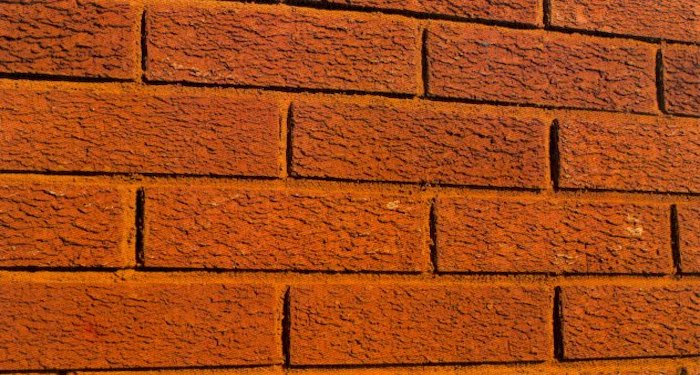
Pros:
- Suitable for ashlar and rubble masonry work
Cons:
- Not especially common repointing brickwork mix
Tuck Pointing
Another method offering an aesthetically pleasing end result is tuck pointing. This technique consists of pushing the mortar into the joint before fixing it such that it becomes flush with the wall face.
With a groove cut, the width of the mortar should be 5mm and its depth 3mm. White cement putty or lime is used to fill the cut before being pushed ahead by 3mm at a minimum beyond the brick face.
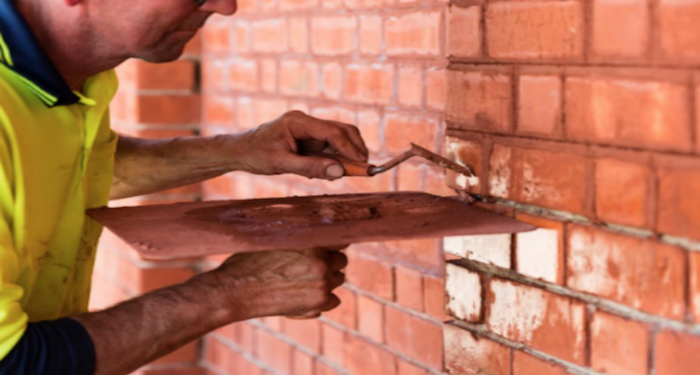
This helps give the appearance of joints that are finer, in turn making the structure look better.
Pros:
- Creates a nice appearance
Cons:
- Complicated option
- Can be time consuming
DIY Repointing vs. Hiring a Contractor
While it might be tempting to tackle repointing brick walls yourself, hiring a professional contractor is often the better choice. Here’s why:
- Specialised Skills and Knowledge: Repointing requires a specific set of skills and knowledge to ensure the job is done correctly. Professionals are trained to handle various challenges that may arise.
- Avoid Further Damage: Improper repointing can lead to further damage and costly repairs. A professional ensures the work is done right the first time.
- High-Quality Finish: A professional contractor can achieve a high-quality finish that not only looks good but also lasts longer.
- Warranty: Many professional contractors offer warranties for their work, providing peace of mind and protection against future issues.
Repointing Process
The repointing process involves several critical steps to ensure the longevity and appearance of your brickwork. Here’s a typical outline:
- Inspecting the Masonry: The first step is to assess the extent of the damage to determine the scope of the work required.
- Raking Out the Old Mortar: The old mortar is carefully removed to a depth of at least 15 mm to ensure a good bond with the new mortar.
- Cleaning the Area: The joints are cleaned to remove any debris or dust, which can affect the adhesion of the new mortar.
- Applying New Mortar: Fresh mortar is applied to the joints, ensuring it fills the gaps completely.
- Pointing the Area: The mortar is then pointed to create a smooth, even finish that matches the existing brickwork.
The specific steps and techniques can vary depending on the type of mortar used, the condition of the masonry, and the chosen pointing style.
Consulting with a professional contractor can provide guidance on the best approach for your specific project, ensuring the old mortar is replaced effectively and the brickwork is restored to its former glory.
FAQs
Q: What are common mistakes made when repointing brickwork?
A: Among the most frequent errors is using the wrong mortar and the incorrect method. It’s vital that the right approach is taken.
This can be especially relevant for ancient or otherwise historical brickwork, including for repointing Victorian brickwork.
Q: Why does brickwork need repointing?
A: Repointing helps to prolong the longevity of a brick structure by minimising water ingress and stopping the emergence of irregularities in the structure (or at least slowing them down).
Q: How do I know if my chimney should be repointed?
A: Whenever the chimney is letting moisture in or there is damage to its joints, it should be repointed.
Q: How long does it take to repoint a chimney?
A: Usually somewhere in the range of one to five days.
Q: How often is repointing needed?
A: Any given structure may not need to be repointed till about 50 years after it was previously pointed/repointed.
It will depend on how sturdy the structure is and the type of mortar/method employed prior.



